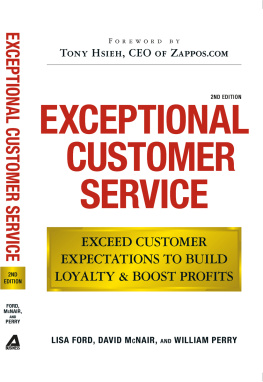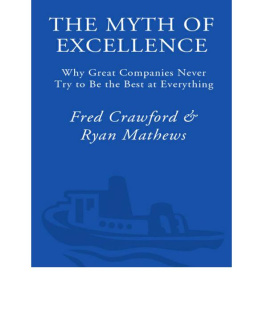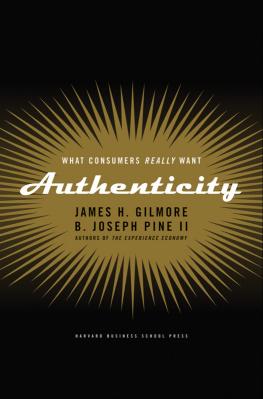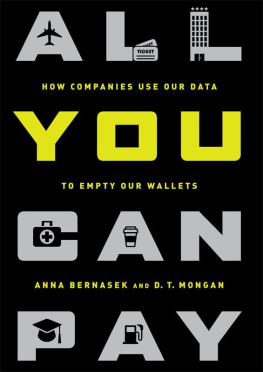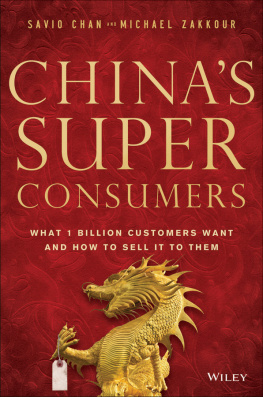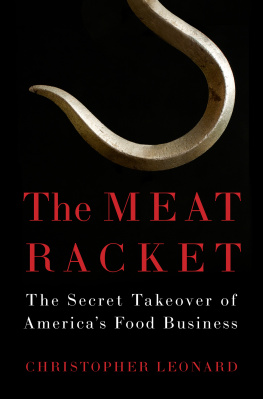Copyright by Christopher Elliott. All rights reserved.
Published by John Wiley & Sons, Inc., Hoboken, New Jersey.
Published simultaneously in Canada.
No part of this publication may be reproduced, stored in a retrieval system, or transmitted in any form or by any means, electronic, mechanical, photocopying, recording, scanning, or otherwise, except as permitted under Section 107 or 108 of the 1976 United States Copyright Act, without either the prior written permission of the Publisher, or authorization through payment of the appropriate per-copy fee to the Copyright Clearance Center, Inc., 222 Rosewood Drive, Danvers, MA 01923, (978) 750-8400, fax (978) 646-8600, or on the web at www.copyright.com . Requests to the Publisher for permission should be addressed to the Permissions Department, John Wiley & Sons, Inc., 111 River Street, Hoboken, NJ 07030, (201) 748-6011, fax (201) 748-6008, or online at http://www.wiley.com/go/permissions .
Limit of Liability/Disclaimer of Warranty: While the publisher and author have used their best efforts in preparing this book, they make no representations or warranties with respect to the accuracy or completeness of the contents of this book and specifically disclaim any implied warranties of merchantability or fitness for a particular purpose. No warranty may be created or extended by sales representatives or written sales materials. The advice and strategies contained herein may not be suitable for your situation. You should consult with a professional where appropriate. Neither the publisher nor author shall be liable for any loss of profit or any other commercial damages, including but not limited to special, incidental, consequential, or other damages.
For general information on our other products and services or for technical support, please contact our Customer Care Department within the United States at (800) 762-2974, outside the United States at (317) 572-3993 or fax (317) 572-4002.
Wiley publishes in a variety of print and electronic formats and by print-on-demand. Some material included with standard print versions of this book may not be included in e-books or in print-ondemand. If this book refers to media such as a CD or DVD that is not included in the version you purchased, you may download this material at http://booksupport.wiley.com . For more information about Wiley products, visit www.wiley.com .
Library of Congress Cataloging-in-Publication Data:
Elliott, Christopher, 1968
Scammed: how to save your money and find better service in a world of schemes, swindles, and shady deals/Christopher Elliott.
p. cm.
Includes bibliographical references.
ISBN 978-1-118-10800-0 (hardback: acid-free paper); ISBN 978-1-118-18015-0 (ebk); ISBN 978-1-118-18014-3 (ebk); ISBN 978-1-118-18013-6 (ebk)
1. FraudUnited States. 2. Swindlers and swindlingUnited States. 3. Computer crimesUnited States. 4. CorporationsUnited StatesPublic opinion. 5. Social responsibility of businessUnited States. 1. Title.
HV6695.E37 2011
332.024dc23 2011032040
For the victims.
Prologue Fenced In
The easiest person to deceive is one's self.
Edward Bulwer-Lytton
Oceana Drive is a quiet road in a Key Largo, Florida, neighborhood that dead-ends into the Atlantic. In 2002, just after our first son was born, most of the lots along the street were overgrown with sabal palms and gumbo limbo trees. Our modest two-bedroom house backed up against a busier subdivision, but if you looked out the window of our living room, you'd think we lived in a jungle.
Well, most of the time.
During spring break, drunken vacationers would amble through our yard after hours, hoping to find a shortcut to the housing development behind us. Our only neighbors had an annoying habit of parking their trailer on our property. At the end of the street, the residents of a coral rock castle often confused Oceana for a drag-racing track, zooming past our home in their convertibles. By the time our son Aren was taking his first steps, it became abundantly clear: we needed a fence.
I soon found myself writing a $400 check to an unlicensed contractor for supplies. I didn't hesitate. He'd been endorsed by friends, and his rates were affordable. A few days later, he knocked on our front door, dropped off a small truckload of lumber, and dug a few holes for the fence posts.
Then he disappeared.
Have you heard from him? we asked our friends, after he stopped answering his phone. Yes, they said. He had to go up north for a family emergency, and ours wasn't the only project he'd left undone.
We never saw him again.
We'd been scammed.
Remember the last time someone pulled a fast one on you? I should have seen that one coming, you said, kicking yourself. I certainly did after our experience with the fence guy. And I was right. I should have.
If it happened to you, would you dismiss it as a momentary lapse in judgment? I did at the time.
But I was wrong. Consumers have been conditioned to fall for bogus offers, and not just the seemingly obvious ones. In recent years, they've even become complicit in many of the everyday and often perfectly legal raids on their wallets that await in innocent places, from the mall to the supermarket.
In other words, I'm part of the problem, and so are you. And it's a big problem.
Scams are shockingly common, ranging from a sneaky $25 overdraft fee to investment frauds that can suck hundreds of thousands of dollars from your bank account.
Tens, maybe hundreds, of millions of Americans are scammed every year, in large and small ways. You've probably been one of them. You may be one now. The Federal Trade Commission received more than one million complaints from the public in 2010, most of them about alleged rip-offs.
Consumer Complaints
| Year | Number |
| 2007 | 1,050,383 |
| 2008 | 1,224,995 |
| 2009 | 1,330,426 |
| 2010 | 1,339,265 |
Source: Federal Trade Commission.
A breakdown of these complaint categories reads like a twenty-first-century rap sheet for the aspiring criminal: identity theft, Internet swindles, phony sweepstakes, virtual auctions that leave you poorer but wiser, and impostor scams. Those are just the ones that are discovered and reported. Many other questionable business practices go unnoticed by customers, and the damage from those swindles is probably far greater.
It's easy to point the finger at small-time fraudsters like a fence contractor and say: Scam!
It's not as easy when there's a legitimate company behind a questionable product or service. And it's all but impossible for us to accept that as customers, we're not only letting these predators victimize us, but actually helping them do so. But it's true, nonetheless.
Let's explore the ways in which countless businessesfrom the largest multinational corporation, to the mom-and-pop store around the corner, to the independent contractor who does odd jobshave developed new and sophisticated ways of taking you to the dry cleaners. I'll show you how consumers just like you have unwittingly encouraged them to do it (and you might find this hard to believe, even aided in the crime) and how you can break that cycle once and for all. I'll also offer strategies to help you spot the scams and save the money that might otherwise be lost.
The Key Largo fence fiasco wasn't the first time I've been scammed, nor was it the last. As a know-it-all senior in college, I lost $3,000 in a slick pyramid scheme. I've been ripped off by a pet store, a bed-and-breakfast, and a man on the street selling new TVs still in the box. Some of my best-known failings have been as a journalist, believing unscrupulous sources with too-good-to-be-true stories that ended up being half-true, and in some cases, not true at all. I felt betrayed each time, but I also came to learn that if I put certain safeguards in place, I could spare myself future embarrassments.


